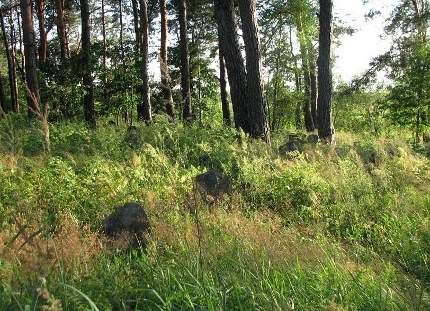s-z

A village in Eastern Roztocze boasting natural phenomena – petrified Miocene trees displayed in the Jalinka Reserve and the local museum. Other interesting sights include a 1901 Orthodox church, a 1903 Roman Catholic church and the wooden St. Nicholas’ Chapel by the springs of the Prudnik River. ...

Sławatycze is a village located among the picturesque meanders of the Bug River. For centuries it was inhabited by a multi-religious community of Catholics, Orthodox, Jews, and Evangelicals. Opposite each other there are two impressive temples - the Orthodox church of the Protection of the Mother of God and the church of Our Lady of the Rosary. On the local market, you can see over three-meter bearded figures known as the brodacze of Sławatycze. According to the long tradition, a parade of men disguised as the brodacze goes through the streets of the village in the last three days of Decembe ...

W Sobianowicach swój bieg kończy rzeczka Ciemięga w wodach Bystrzycy. Piękny krajobraz dolin dwóch rzek oraz otaczających wierzchowin, przenika także pewna historia. Interesującą i tajemniczą zbieżność nazwisk prezentuje lokalny przekaz, który barwnie przytacza postać XV-wiecznego właściciela Sobianowic – Jana Kuropatwę. Istnieje przypuszczenie, że był to ten sam Jan Kuropatwa, który w 1430 roku obrabował skarbiec klasztorny na Jasnej Górze, dokonując jednocześnie profanacji cudownego obrazu Matki Bożej Częstochowskiej. Pobliskie, nadbystrzyckie tereny, osiedlali p ...

A village in the Sobibór Forest with well-preserved historic architecture. A few kilometres north of the village, the Nazis established an extermination camp operating from the spring of 1942 to the autumn of 1943, where 180,000 Jews and 1,000 Poles were killed. Presently it is a museum and a remembrance site. ...

A village in the Łęczna–Włodawa Lake District and a holiday resort located among forests, lakes and fish ponds (covering over 500 ha). Historic sights include buildings within the former estate of the Sosnowski Family, a Baroque manor annex from the mid-18th c., a 25-hectare park with a partial geometric design, 19th-century Orthodox church and a parish church displaying Baroque and Classicist features. ...

A village in Polesie with well-preserved historic architecture. It is the seat of the Educational Centre and Museum of the Poleski National Park and the starting point of the ‘Spławy’ nature tourist route leading along a wooden gangway to Łukie Lake. There is a specially-designed tourist trail for children called ‘Żółwik’ (Little turtle). ...

A large village situated at the fork of the Wieprz River and the Vistula River. In the past it was a town where court proceedings and conventions of the gentry were held. Special interest should be given to the Franciscan Church of Transfiguration of Christ from the 18th-19th c. and St. Martin’s Church – a late-Gothic temple erected in 1434 and rebuilt many times from the 16th to the 20th c. ...

A town since 1546. Here the first victorious battle of Polish insurgents during the November Uprising (14th November 1831) took place, which is commemorated with a monument to General Józef Dwernicki and the annual ‘Cannons roar over Stoczek’ road run. Tourists will enjoy a visit to the recreational resort by the reservoir on the Świder River and scenic pine forests with a river spring. ...


A village on the border of Polesie and Podlasie. Many soldiers and officers of Tatar origin who served in the Polish army settled here in the second half of the 17th c. The largest Tatar cemetery (‘mizar’) in the Lublin Region, with over 150 gravestones from the 17th-20th c., is located here. Another mizar with about 40 tombstones can be found in Kolonia Zastawek near Lebiedziew. ...
Page 1 of 4










